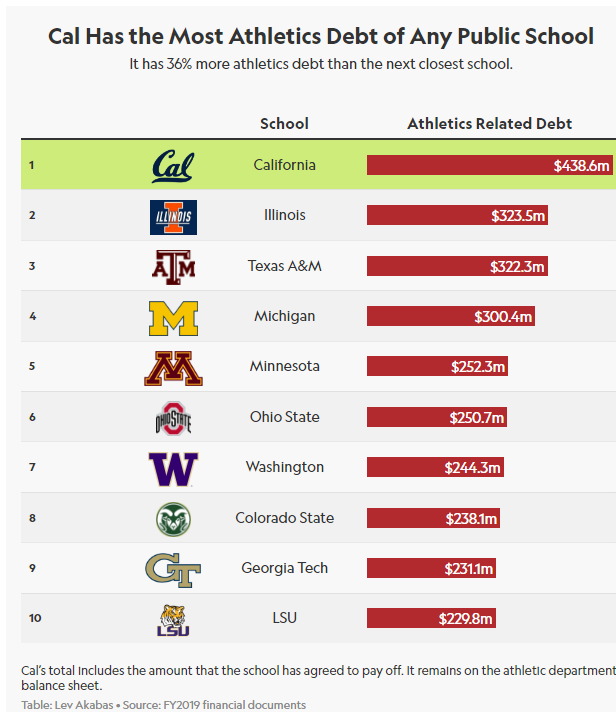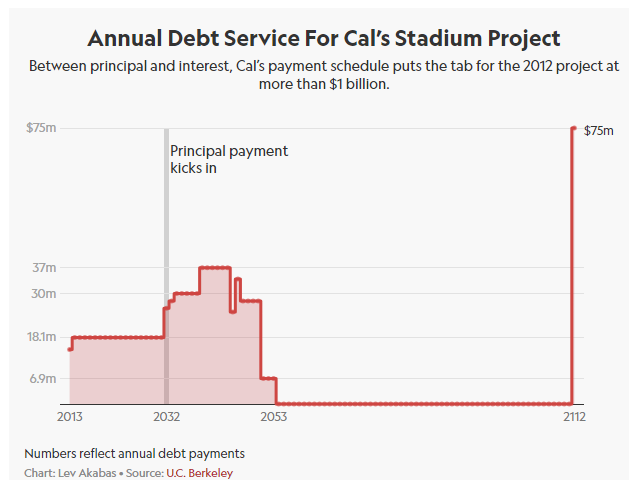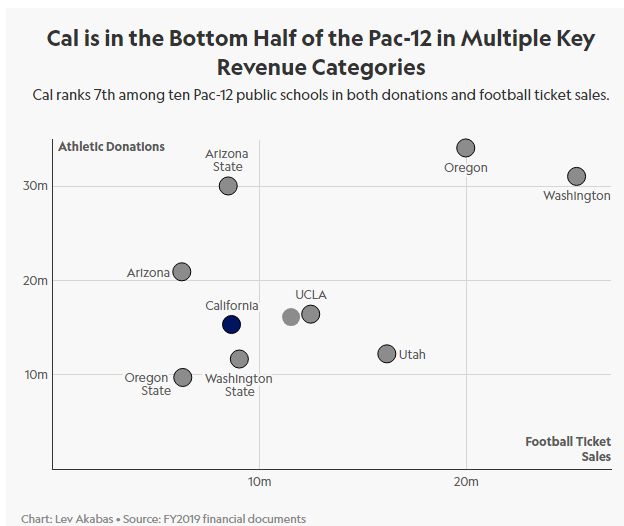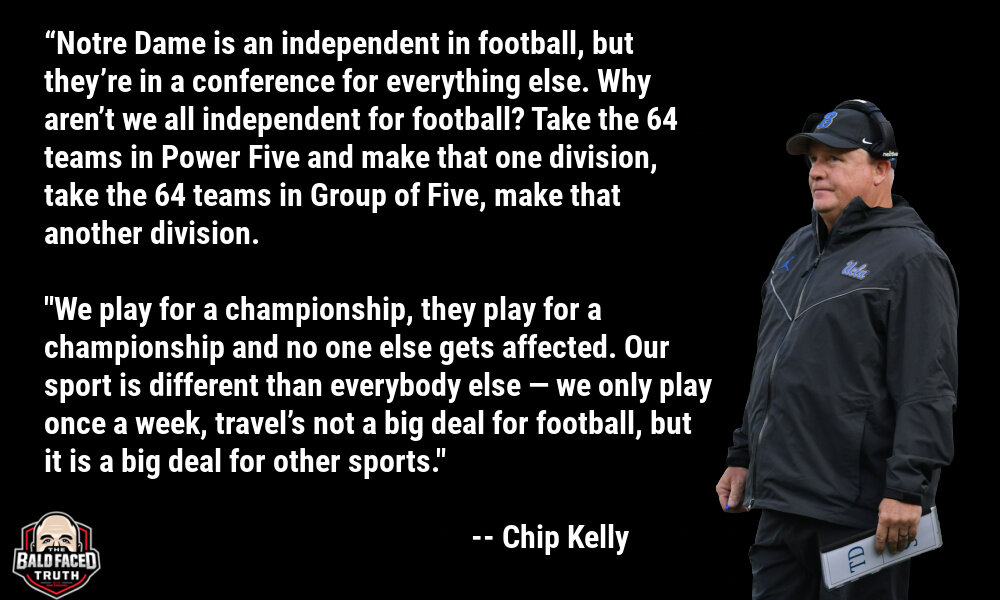-
Posts
2157 -
Joined
-
Last visited
Content Type
Profiles
Forums
Store
Downloads
Recruiting - 2020
2019-2020 Football Season
Football
Entertainment
Sports
News and Business
Cloak Room
Transfer Portal
Recruiting
Events
Posts posted by Hurtlocker
-
-
3 hours ago, camel at sea said:
For pro rata shares to those two schools, ESPN and the SEC could shut and lock the door on the Deep South in college athletics. That's potentially a very valuable chip if you're looking for a financial partner. How much would Apple or Amazon pay for a piece of the SEC? Likely a lot. You'd have 90% of college football's national titles since 2000, the nation's best HS football recruiting footprint, etc.
I also think that if FSU and Clemson are gone, the ACC gets stable. UNC and UVA aren't worth B1G shares. The B1G already added two dilutive members a few days ago. The only way they'd be able to add again without taking another loss would be if ND joins. So for the price of moving FSU and Clemson, you also buy ACC stability (stability that probably keeps ND indy, even without FSU and Clemson.) The ACC's Tier 1 deal is as undervalued right now as the Big 12's deal was before Texas and OU announced their exit. The Mouse might be willing to keep them status quo in exchange for letting their two football jewels go.
I don't know what FSU and Clemson could afford, but if ESPN is mediating the GOR exit, it doesn't have to be $500M each or anything prohibitive. Would the ACC release them for $125M each and status quo media rights payouts? I think they would.
But....why? They already own the south with Tennessee, Georgia, Florida, LSU, Alabama, Texas and Oklahoma. Neither FSU nor Clemson are bigger draws than any of them.
If FSU/Clemson are 25-30% of the ACC's value, then keeping that status quo means ESPN is overpaying the ACC for 13 years to the tune of $1.2-1.5 billion. Additionally, they now need to double the payments of FSU/Clemson in the SEC, which means shelling out an additional $780m.
Even without factoring in buyouts, or inflation growth, or GoR negotiations, for ESPN to keep things status quo for 12 and double for 2, would cost them $2-2.5 billion over 13 years. To outlay this kind of cash FSU/Clemson would need to have all of their games be T1 only games (they can't) averaging around 9-12m in audience every game (they won't).
There is so much working against ESPN on this, at a time where they are slicing budgets and are looking to put more money into the UFC/NBA/NFL, that I just cannot fathom a way for them to fund this.
The only way this kind of works is if you do it the same way it happened with the Pac. Instead of paying the Pac $300m for ten properties, ESPN spent $80m for four.
-
 1
1
-
-
3 hours ago, billfromlaketravis said:
Turner has a hole burning in their pocket. They would have happily paid $30 million per school to get into college football.
Er, wait....what? They're in the process of being cobbled together with Discovery Networks from the AT&T split, they've shut down production on numerous movies and shows, and lost a ton of subscribers in cable and in rebranding to Max. No one is sitting on a pile waiting to be spent, they're struggling to make money on what they've already invested.
-
 2
2
-
-
6 minutes ago, 'stache said:
I think it could be done for a more reasonable cost (there's no way the ACC could enforce $300-$500M in damages under a liquidated damages clause), but I don't think the BIG or SEC have any desire for more expansion this round, not yet at least.
It's not damages, that's the catch. The ACC literally owns the rights. If FSU wants them before 2036, they need to buy them back.
The question is, what is that worth?
It's hard for FSU to argue that they only need to pay $300m on one side and that they're worth $750m on another.
-
18 minutes ago, 'stache said:
Once players see it play out, I don't think any of them will have any desire to take that sort of risk.

-
 1
1
-
-
30 minutes ago, 'stache said:
Pure speculation on my part, but I have the sense that UNC and UVA like being the epicenter of the ACC. And for as good as they are academically and in basketball, their football teams have been perpetually mediocre and their football tv ratings are bad to mediocre. If FSU and Clemson leave, I think they could muster a decent tv contract and stay together. Unless, of course, ESPN and Fox decide they want it dead like the PAC.
Its really a question of how much Fox wants to fuck with ESPN. Any move from the ACC to B1G is full on stolen property. It almost makes more sense for the B1G to go UVA/UNC/Duke/FSU because they take the biggest football brand and all the basketball cache that ESPN has built their network on. The ACC media contract for weekly basketball games is basically who is playing UNC or Duke and for football its whoever is playing ND or FSU.
How much is neutering your rival's last non-SEC value worth?
And what if the mouse doesn't care? If the SEC doesn't care? Let the ACC go, dump the money into the NBA and just feature SEC/B12 football and basketball.
-
 1
1
-
-
2 hours ago, Sir Ulrich said:
UVA averaged 600k viewers from 15-19 and 600k and 240k the last two years. They are a net negative to the Big10.
Miami averaged 1.5 million from 15-19 but dropped to just over 1 million and 600k the last two years. In '21 they got 5.67 million for the Bama game and would averaged 615k the rest of the year. They don't have their own stadium continue to let their biggest donors embarrass the University.
UNC averaged 750k from 15-19 and just over 1 million and 849k (with a Heisman level QB no less) the last two years. They vaguely reach the Washington level of viewership but who would be their Texas/USC/Oregon to help bring them along?
Duke averaged 400k from 15-19 and 64k and 115k the last two years. Georgia Tech and Syracuse would be a better add than this.
When ND gets squeezed by expanding conference slates they will have their choice of partners and Miami is 3rd in the state for brand/viewers etc.
Everyone except ND is a net negative for the B1G, even FSU/Clemson, though FSU would be the closest #2.
-
2 hours ago, Al_4_ISU said:
We have a new attorney general. She’s awful. Super MAGA/Christian morality bullshit (No CR). She hates fun, and I suspect is anti gambling.
I suspect that she, or someone on her staff, wants to show the Iowa public the evils of gambling and ruining our most beloved sports teams is how she’s trying to do that.
But I’m totally spit balling. This investigation was only directed at high profile men’s sports at ISU and Iowa. They didn’t even look at Northern Iowa or Drake.
There’s an obvious ulterior motive, but what exactly that motive is and who is pushing it isn’t obvious.
The thing that gets me with this story is the State of Iowa looked and the data came from the betting sites. There is no way in any statistical model I can think of, that this is isolated to Iowa, a state that barely moves the gambling meter on any given day. There are like 35 states that have legal online betting. Maybe a poor choice of words, but I'd wager there are a metric shit ton of big programs out there that are praying that their states don't also decide to look at who is betting, and how, now that the road map to find them is laid out publicly.
Another thing I've found funny about this, outside the stupid parents, assuming they knew and the kids just didn't use their info, is how small the bets were. We're talking about paying kids 5, 6, 7 digits in NIL, and most of these bets were for $10 or less.
-
So...?
SEC: FSU, Clemson?
B1G: UVA, UNC, Miami? Hold for ND or swipe Duke?
B12: VTech, NCState, Pitt, Louisville?
Left out: Cuse, BC, Wake, Tech?
The biggest issue I see here is ESPN is THE player in all of these moves besides the B1G, and they've invested a ton in the ACC Network. Its equally plausible FSU/Clemson leave and the remaining 12 stay together, add UConn, and live comfortably on the buyouts, which should be significant if you can't get 12 teams to vote for dissolution. Let's pretend its only a quarter bill each, that's $500m in the ACC's coffers, which is equal to an entire year of revenue. They could buy Cal's debt and make another $600m on the servicing over the next century.
Agree though that FSU/Clemson not having a home in advance that is bought and paid for is dumb. Especially when someone else currently owns your rights.
-
 1
1
-
 1
1
-
-
10 minutes ago, Zhorn96 said:
8/15 is when FSU has to notify if they are opting out if they are doing so...
So....Tuesday.
-
 3
3
-
 2
2
-
-
6 minutes ago, Rimbo said:
nah
The thing about USC is, like us, they're an arrogant blue blood who gets more credit than they deserve, and demands big money from the media because of intelligent yet rabid fan bases. We are very much alike. Really enjoyed meeting their alumni in '06... and then beating them.
I'll root for the Trojans against anyone not named Texas, Michigan, or Florida.
I went to a UC for grad school; see how much school spirit I have?

-
 2
2
-
-
2 minutes ago, 'stache said:
Maybe CSU and Air Force too? SDSU would then make 10. Who decides whether a conference is "autonomous" i.e., P5?
The other autonomous conferences.
I can't see where we'll have 5 going forward.
-
4 minutes ago, camel at sea said:
So if the CalFord to ACC stuff is done, the next move for the PAC4 is either 1) merging with the MWC, or 2) an AAC raid and an Apple+ media del. They could park on 8 members for a year and then fill out the roster with MWC teams when the buyout number drops. I'd guess that the Bay Area schools prefer the second option. There's some value in the "Pac" brand and they'd want to keep its history, NCAA credits, etc.
If Apple can promise better money than the AAC, then I think they could get SMU, Rice, and Tulane relatively easily. The tug-of-war between the academic people in the Bay Area, and Apple, over which other MWC/AAC schools get invited later would be really fascinating. SDSU and Colorado State seem like safe bets, but would Apple twist their arm enough to make them invite Boise or Fresno St?
Yeah the only problem is they didn't start doing this last year. Every MWC school now has a $34m buyout to get out by next year, instead of $17m. The AAC has around $20m. They'll all have some negotiated down, but still, the only teams west of the Mississippi who can move for free are the Pac 4.
-
16 minutes ago, 'stache said:
Did I read that the cost of Cals renovation was so high because it sits in a fault line? For the same price or less they could have built a new smaller stadium away from the fault line.
8 minutes ago, BachelorTrek said:Nah, they'd rather feel smug about their no-pricetag-too-large earthquake-proofing the stadium in defiance, it seems:

-
 2
2
-
-
9 hours ago, Sbbruin said:
The pandemic crushed ucla. Fanless games for a full football and hoops season was a gut punch we’re still digging out from.
The pandemic crushed all budgets, even those who figured out how to play. The B1G had to sell a majority stake in their rights to Fox to make up some quick cash and then Fox went goblin mode.
-
20 minutes ago, FartingDreamer said:
Neil Peart (R.I.P) was twice the drummer, probably the greatest drummer of a generation. He literally could have had the visual acuity of Stevie Wonder and would still be no less a drummer, I've never seen a drummer hit all of the drums in a set without looking or turning his head.
not to keep drummer talk from going away, but I'd agree. He also wrote a bunch of their songs and used some complicated time sigs and transitions.
-
 1
1
-
-
32 minutes ago, BurntOrange&White said:
Link for this?
Can the Cal Golden Bears Survive A Season Without Football?
“Perhaps the pandemic will finally give Berkeley a way to get out of having a football team,” said one member of the 2016 task force.
QuoteThe financial situation for the Cal Golden Bears is about to go from bad to worse.
One of the country’s largest and most successful athletic programs, Cal is also remarkable in another way. No public school’s athletic department has more debt than the Bears, the result of what was once the most expensive capital project in NCAA history.
The program is struggling in the same ways many others are too. College football is hanging by a thread, which means ticket sales and possibly TV money will drop significantly. Cal’s also losing partners—Under Armour is trying to back out of its $86 million contract—and facing a new wave of athlete activism, born from football players on its own campus, with a long list of demands.
It’s a financial minefield. In the four years before COVID-19 disrupted college sports this spring, Cal’s athletic department ran a combined $75.8 million deficit. With tensions already high on campus about resources given to athletics, the Golden Bears may be the poster child for how the pandemic could change the financing of big-time college sports.
“The options they have are really limited,” said John Cummins, Cal’s former associate chancellor. “Let’s just assume that the impact, even if they play football, is tens of millions of dollars. Then the question is, how much of that do they want to assume in debt, and how much of that will require cuts of some kind?”
Cal’s not alone, of course. This story will play out across the NCAA, as debt comes due, revenues dip, partners back out of deals and state funding dries up. Top-division athletic departments sold more than $1.1 billion in football tickets in 2018, and brought in more than $2.2 billion in media payments, mostly for football rights. NCAA payouts from the canceled March Madness tournament will drop by 63%, and the companies and people that college sports rely on are also struggling.
“We have no plan for a year without football,” one athletic director told Sportico.
“It would be Armageddon,” said another.
Those conversations happened before a group of more than 100 Pac-12 football players announced that they wouldn’t play this year until they were granted a series of new financial and medical benefits. The group was borne out of conversations between Golden Bears players, and their asks include a guarantee that no more sports would be eliminated on Pac-12 campuses, the right to market themselves, and most notably, 50% of conference revenue to be distributed to athletes.
“To ensure future generations of college athletes will be treated fairly, #WeAreUnited,” the group said in an open letter published on The Player’s Tribune.
“The problem is that athletics has never been able to pay back debt,” Cummins said.
A university known much more for its activism and academics, Cal–Berkeley’s athletic philosophy has historically focused on opportunities for students. The Bears offer 30 sports, one of the highest totals in the country, and they excel at many of them. As of last year, Cal had won 97 national team titles in 16 sports. The school has had a national champion, team or individual, in 46 straight years.
Offering that many sports is expensive, especially as the costs to maintain top-tier football and basketball teams skyrocket. Amid the financial problems of the past few decades, Cal’s athletic leaders have seemingly made decisions based on the belief that revenue will always grow in the future.
Many on campus no longer believe that’s true. Losing the $86 million Under Armour deal, one of the bigger apparel contracts in college sports, would affect revenue for years to come. The school’s $100 million commercial rights deal with Learfield IMG College, may also need renegotiating, though an athletic spokesman says it remains intact. Another big variable is the value of the Pac-12’s next round of TV deals, set to be negotiated over the next few years.
“There’s this optimism that lives in the world of college sports that you can just raise more money,” said Karen Weaver, a sports management professor at Drexel. “But COVID has exposed the problems with all of the money systems that they count on.”
Long before this metaphorical seismic shock, Cal had to deal with literal ones. Its football stadium was built atop a geological fault, and instead of building or playing elsewhere, leadership chose a pricey renovation that cost more than $200 million in retrofitting. By the time it was finished in 2012, construction costs (which included a high-performance center) had mushroomed to $474 million, an NCAA record for a capital project.
Of that cost, about $445 million was financed through borrowing. Debt-service payments, currently at $18 million, will eventually jump to $37 million in 2039. The payment schedule stretches into the next century.
Cal originally planned to pay off the debt with decades-long season ticket packages, but demand for those were weaker than expected. Just a few years after finishing the renovation, one of the largest athletic departments in the country realized it couldn’t pay its bills.
Facing an impasse, Cal formed a 14-person task force in 2016, then commissioned a review from an outside consulting firm. Millions were floated from the chancellor’s office to athletics. In late 2017 a potential long-term solution was reached—new chancellor Carol Christ agreed to have the school assume more than half of the stadium debt payments.
She and new athletic director Jim Knowlton then agreed to a six-year budget plan designed to reduce the department’s reliance on the school from $25 million in 2020 to around $13 million by 2025. A Bears spokesman said that despite the cancellation of spring sports, including the postseason basketball tournaments, Cal athletics met its budget target for 2020.
“We are considering a number of different measures, but at this point, we do not want to speculate and believe it is too early to fully understand the impact of the pandemic given the number of uncertainties,” he said.
That leaves a lot of questions for right now. Cal’s athletics budget is around $108 million, with $36 million of that attributed to football. Some revenue will be held, and the school will save some costs—it can cost $2 million to fly its football team to games—but a canceled football season would be catastrophic.
“Perhaps the pandemic will finally give Berkeley a way to get out of having a football team,” said one member of the 2016 task force.
What looms are a host of bad options, many of the same ones being debated by presidents, chancellors and athletic directors around the country. One option available to the Bears: borrowing more money. Cummins said athletics has the option to borrow money from the UC system president’s office in the form of a 2.5% interest loan that would feature five years of interest-only payment before the principal kicks in. (A spokeswoman for the UC President Janet Napolitano’s office did not respond to requests for comment.)
But the department, which is supposed to be self-sustaining, has struggled to pay back money in the past. Cal chancellors in 1999 and 2007 forgave a combined $49 million in athletics deficits that the school had covered. That was before Christ took on the around $200 million for the stadium project. “The problem is that athletics has never been able to pay back debt,” said Cummins, who wrote a 28-page research report on the saga back in 2017.
Then there’s cutting programs. Nearby Stanford University, a school that Cal considers a rival both athletically and academically, turned heads across the country when it dropped 11 varsity sports last month. Cal could drop the same number and still offer more than many FBS schools.
But Cal’s been there before as well. In 2010 the school tried to eliminate five sports, and all were reinstated following alumni uproar. Sports are near and dear to many donors’ hearts, and keeping donors happy is increasingly important as state money dries up. There are other options, like trimming operating expenses for sports or laying off staff, but those likely won’t save enough to cover losses.
The entire university, including athletics, has projected a $340 million budget gap due to COVID-19. The school has imposed a hiring and a salary freeze and last month laid out a mitigation plan—which includes short-term borrowing, more federal funding and personnel changes—that would reduce that gap to $65 million.
“Universities were struggling with resource allocation before this virus hit, and with remote learning and enrollment drops, resources will dwindle even more,” said Brad Bates, a former D-I athletic director who was part of the consulting group that did Cal’s 2017 review. “There’s going to be a more intensified fight for how those resources are prioritized and allocated across campus.”
The sports-specific decisions rest with leaders like Christ and Knowlton, who must correct the financial missteps of the people who held their jobs before them. Both were unavailable to comment for this story, though they’ve said in the past that cutting sports is a last resort.
No matter what happens, there’s likely to be a new round of opposition from faculty on campus. That last resort may soon become reality, but maybe not in the way that some would expect.
“Perhaps the pandemic will finally give Berkeley a way to get out of having a football team,” said one member of the 2016 task force. “We will see.”
-
 1
1
-
 2
2
-
-
42 minutes ago, redswingline said:
The vast majority of athletic departments run in the red. Priorities are outta wack..
It's because it's the front porch for most school's marketing to the greater world. It's worth losing money on sports if you gain it back in admissions, much like a marketing budget.
That being said, some are far worse than others. In the Power Five, 77% of the schools operated in the black as of the 2021-22 fiscal. Of those that didn't, half were in the Pac 12:
Arizona, Colorado, Tennessee, South Carolina, Arizona State, Oregon State, Washington, Viriginia Tech, Ole Miss, Maryland, UCLA and Rutgers.
-
 1
1
-
-
20 minutes ago, Zhorn96 said:
Rumors are flying on the Cal side. UVA, Va Tech and NC State are the swing votes and ND is pushing hard for Cal and Furd to be added at a 70% share so the thought is is if ESPN, who won’t have any west coast inventory, will pay some travel costs, it might get done. SMU for free would give $2-3m per team each, ACC can distribute the Cal/Furd discount however they want so that might shut up FSU and Clemson if they get $8-10m each. ND wants the Bay Area for an annual California trip and leverage against the Big18 trying to box them in… allegedly.
One person claims the Big18 is back in for $20m per team with a full share in 6 years. Taking that with way more skepticism…
All rumors so take it for what it’s worth…
ESPN should just give them the BYU deal of like $10-15m a year to go indy, then have the B12 schedule them OOC. That way they have all the games and don't have to pay.
Either that, or add them and start a new conference network off the old PacNet infrastructure to pay for the adds.
Edit: I went to look and the old B12 had 7.9m dma households, which is not enough for a conference network, nor did they have the inventory to fill one.
The current B16 swells that number to 18m homes, which definitely supports a conference network and, at sixteen, provides the inventory to fill it up. Adding Stanford/Cal bumps that up to 20.5m homes. That's enough to generate $250-400m in yearly revenue off back end rights.
-
23 minutes ago, USC Traveler said:
They've been the lowest-resourced P5 for years (even below Wake).
This is another one of the Pac's numerous failings. In the 2010s, when Texas stayed in the first realignment, the "have nots" of the conference invested the media revenue wisely in sports infrastructure and in methods to increase fan engagement and revenue. While they won't catch Texas, they transformed the conference. Iowa State brought in around $45m back then, they've more than doubled that in a decade to $112m. Kansas State doubled theirs in that time and most others jumped from the $60s into the $100ms. Matter a fact, all of the Irate 8 have increased their AD budgets over $100m, which is sort of the line in the sand for the top 50 schools. Granted, they all need to bump that up into the $150s in the next 5 years, but their books are healthy.
This is not the case with the Pac. Their haves continued to have, but the have nots didn't keep up in the same fashion. Most all of the schools use an unhealthy amount of school funds to subsidize the athletic departments and they've been the most financially weak of the P5 conferences for a while, but the OSU/WSU are special.
Oregon State and Iowa State, who had the smallest AD budget in the Big 12 a decade ago, were pretty similar in 2013, today Iowa State brings in $23m more per year. And it does that without taking any school funds (outside charging the students ticket fees in tuition). Oregon State got to its number with $8.5m in school funds, meaning the clones make $30+m more per year than the Beavers with a similar media deal.
Washington State is even worse and, to your point, they are the lowest revenue generator in the Power Five. It takes $14m in school funds, meaning its true revenue is only $69m - and 65% of that is rights and licensing! For comparison, Central Florida made $89m in that same year, but without a power five media deal.
Oregon State and Washington State, regardless of history or success, just don't operate like a power five athletic department and are far closer to Air Force, SDSU, and UNLV.
-
 6
6
-
 2
2
-
-
9 minutes ago, Sbbruin said:
Well their media contract, and GOR, was up. That would be the same anywhere. But waiting so long to get a media deal doomed them.
Definitely, but on top of those two things the B12, MWC, ACC, and AAC have buyouts that run far longer than any media deal. The B12's is a 99 year agreement. It costs $100m to leave the B12, $120m to leave the ACC, and $17-$34m to leave the MWC and AAC. The Pac had none. So its cheaper for Stanford to move to another conference and way more expensive to backfill the Pac.
That's why the Pac brand will disappear fully. If they had a buyout, I doubt anyone would have left after USC/UCLA. They could have added SDSU/SMU and made less, but the math to jump to the B1G at reduced rates or Colorado/AZ to the B12 would have been far less friendly.
-
43 minutes ago, ousux said:
Do we now live in a world where the MWC could be seriously mulling over picking up the scraps of the Pac12 and not the other way round? What a bungled mess out west lol.
The Pac fucked themselves royally. They have no buyouts and all the other conferences around them do.
Its like they learned nothing from the Big East, ACC and Big 12 over the past 20 years, while the MWC and AAC did.
-
 1
1
-
-
12 minutes ago, BurntOrange&White said:
I think I saw yesterday maybe on here or elsewhere that adding teams could trigger a renegotiation clause?
They could do that with UConn though. Only thing I can think this may give them is more premium subs for ACCN. But even then its not a huge amount. Maybe $50-60m more out of DFW and the Bay Area.
If ESPN is giving them full in, maybe that's enough to bribe FSU and Clemson. If ESPN is using this bump to pay for them though, its a wash.
-
-
6 minutes ago, Rimbo said:
ALL OF THIS.
Fuck em both. This talk of them joining this P5 conference or that P5 conference is wishful bullshit. Stanford belongs in a P5 conference as much as the University of Chicago, who hasn't had a football program since... i forget when and I'm not looking it up, because i don't care about them, either. There are 10 UCs, every last one is a top 100 school, and only 2 have football teams; the better one of the two is mediocre at best, and joining the B1G.
not so fast!

-
 2
2
-









Realignment talk not going away
in Football
Posted
Could The Mountain West Become A Power 5 Conference?